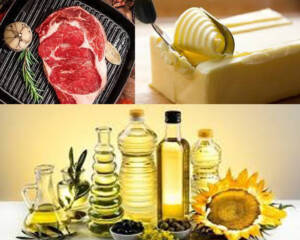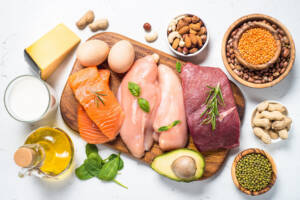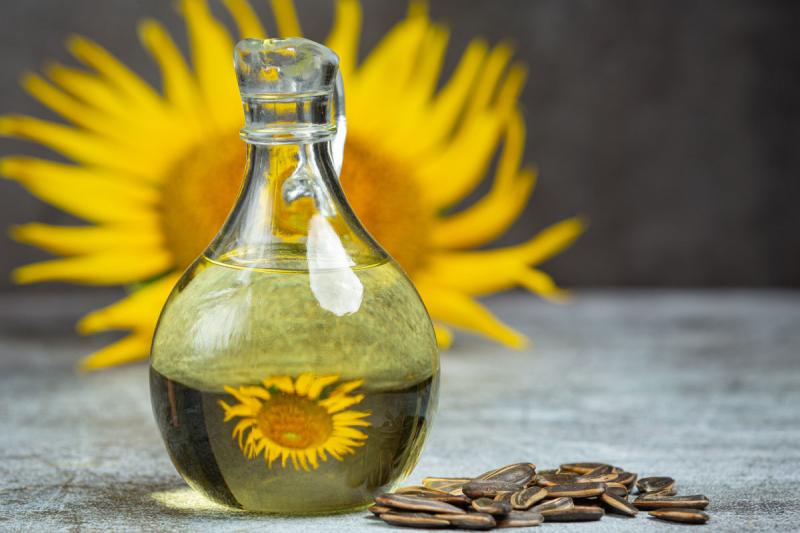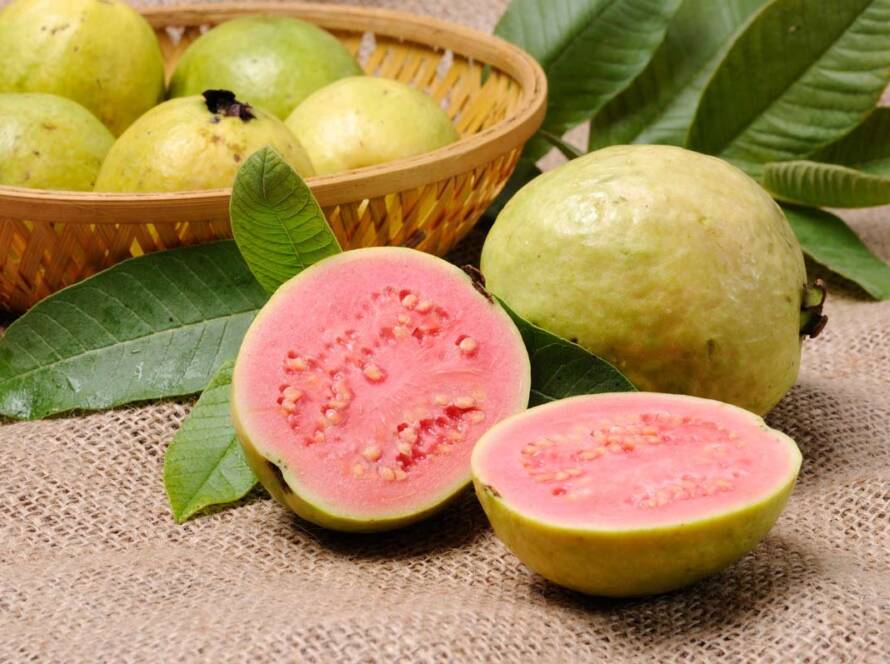Do you know that besides the fat and oil that is added while cooking, it is also present in various other foods such as milk, eggs, meat, nuts, seeds, cake, cookies, fried snacks, baked goods, ice cream etc. This fat contributes to the taste and flavor of food, but cannot be seen and hence is called invisible fat. We may not even be aware that it is present in some foods.
Visible fats are those which have been separated from the original plant or animal sources. These can be seen and added to foods. These include
a} Fat from Oil seeds: coconut, corn, groundnut, mustard, palm, rice bran, safflower, sesame, soyabean, sunflower.
b} Fat from Animal source: Butter and Ghee.
c} Fish oils: Cod liver oil
Besides these, some visible fats are present on the cuts of meat, bacon and poultry skin. Even after trimming the visible fat from a cut of meat, the lean meat still contains some fat. This is the invisible fat that cannot be removed.

Invisible fat refers to fat that is present as an integral component of several foods, cannot be seen and is impossible to separate from food, physically. It includes the fats present in the cells, cell walls and cell membranes of both plant and animal tissues. Almost everything we eat as listed below carries some invisible fat.
- a) Plant foods – Cereals, millets, vegetables, spices, nuts, oil seeds, coconut, avocado.
- b) Animal foods- Milk and milk products (curd, cream, cheese), flesh foods, (mutton, pork, chicken) organ meats (brain, liver, kidney), fish, shrimp, prawn.
In foods such as mayonnaise, French fries, chips, chocolate, cookies, cakes, pastries and pies, fats are hidden, becoming an integral part of the food during cooking.

Type of Fatty acid in Invisible Food sources
- Animal foods like meats (muscle and organ) and milk and its products predominantly contain saturated fats.
- Avocado, almonds, pumpkin seeds, sesame seeds have higher concentration of
- Lean meat being a structural fat, has
- Fatty fish like seer, hilsa, salmon, mackerel, tuna, sardine are rich source of omega 3 fats.
- Wheat, bajra, black gram, rajmah, cow pea, green leafy vegetables, flax seeds, chia seeds, walnuts spices such as fenugreek and mustard seeds contain high proportions of omega 3 fats.
Recommended Daily Intake of Visible & Invisible Fat
For an adult consuming 1600 Kcal/ day, total fat intake should be 35 gm comprising both visible and invisible fat. A balance of all fatty acids is essential. Additionally, it is important to get the correct ratio of n-6 and n-3 fatty acids. Different oils contain specific anti-oxidants (like tocopherols, oryzanol, carotenes, tocotrienols), phytosterols, and micro-nutrients. To get a good proportion of all the classes of fatty acids and anti-oxidants it is advisable to consume more than one type of vegetable oil in rotation as well as diverse food sources.
Energy – 1600 Kcal
| Type of Fat | % of Total Calories | Calories (Kcal) | Fat (gm) |
| Total fat | 20 % | 320 | 35 gm |
| SFA | 6 % | 96 | 10.6gm |
| PUFA omega 6 | 6 % | 96 | 10.6 gm |
| PUFA omega 3 | 2 % | 32 | 3.5 gm |
| MUFA | 6 % | 96 | 10.6 gm |
For any changes in the total number of calories the quantities of fat shall vary proportionately.
Visible Oil consumption / day – 20 gm (4 tsp) as follows:
| Type of oil | Quantity | Average fatty acid composition |
| Butter/ ghee/ coconut/palm oil ( rich in saturated fats) | 1 tsp | SFA – 5 gm
Omega 6 PUFA – 5 gm Omega 3 PUFA – 1 gm MUFA – 8.5 gm
|
| *Mustard oil / **canola / soyabean ( rich in omega 3 and omega 6 PUFA) | 2 tsp | |
| Groundnut / ***sesame / **** rice bran/ / olive (high MUFA, moderate omega 6 PUFA) /corn/sunflower/ safflower (high omega 6 PUFA) | 1 tsp | |
| Total | 4 tsp |
*Mustard oil has near ideal fatty acid composition.
**Canola Oil contains omega-6 and omega-3 fats in a 2:1 ratio, which is perfect. It is the richest cooking-oil source of omega-3 fat that has been linked to heart health. (As per Research)
***Sesame oil -contains sesamin & sesamol which are antioxidant and anti-inflammatory compounds.
****Rice bran oil has cholesterol-lowering properties due to the presence of a compound, oryzanol. It also contains squalene, which is good for the skin.
The balance 15 gm of total fat (SFA – 5.6 gm, omega 6 PUFA – 5.6 gm, omega 3 PUFA- 2.5 gm & MUFA 2.1 gm) can be obtained from the invisible food sources of fat.
As food consumption varies with people, for the convenience of everyone we are providing the data on the type and quantity of fat available from various invisible food sources. Depending on your own food consumption pattern, you may choose the foods, to meet the above specified fatty acid requirement.
Type & Quantity of Fat in Natural Invisible Food Sources
| Food | Quantity | Fat (gm) | Predominant fat |
| Full cream milk | 100 ml | 6.2 | SFA |
| Toned milk | 100 ml | 3.1 | SFA |
| Double toned milk | 100 ml | 1.5 | SFA |
| Skimmed milk | 100 ml | 0.1 | SFA |
| Cheese | 100 gm | 24.5 | SFA |
| Avocado | 100 gm | 14.7 | MUFA |
| Almond | 1.2 gm (1no.) | 0.6 | MUFA |
| Walnut | 4.2 gm (1 no.) | 2.7 | Omega-3 & omega 6 |
| Peanut | 0.5 gm (1 small) | 0.2 | MUFA |
| Peanut | 1 gm (1 large) | 0.4 | MUFA |
| Cashew | 1.4 gm (1 no.) | 0.7 | MUFA |
| Pistachio | 1 no. (0.7 gm) | 0.3 | MUFA |
| Pumpkin seeds | 1 tsp (3 gm) | 1.5 | Omega 6 |
| Flax seed | 1 tsp whole (3.4 gm) | 1.4 | Omega 3 |
| Flax seed | 1 tbsp whole (10.3 gm) | 4.4 | Omega 3 |
| Flax seed | 1 tsp ground (2.5 gm) | 1.1 | Omega 3 |
| Flax seed | 1 tbsp ground (7 gm) | 3 | Omega 3 |
| Til seeds | 1 tsp (3 gm) | 1.3 | MUFA |
| Sunflower seeds | 1 tsp (3 gm) | 1.5 | Omega 6 |
| Chia seeds | 1 tsp (3.2 gm) | 1 | Omega 3 |
| Pine nut | 1 no. (0.2 gm) | 0.1 | Omega 6 & MUFA |
| Fatty fish | 100 gm | 6 | Omega 3 |
| Lean fish | 100 gm | 1.5 | Omega 3 |
| Chicken with skin | 100 gm | 18 | Omega 6 |
| Chicken without skin | 100 gm | 4 | Omega 6 |
| Egg whole | 100 gm | 11 | MUFA, SFA, PUFA |
| Mutton | 100 gm | 13 | Omega 6 |
| Pork | 100 gm | 35 | Omega 6 |
Quantity of Fat in Prepared Invisible Food Sources
| Food | Quantity | Fat (gm) |
| Dahi vada | 1 no. (162 gm) | 16.8 |
| Chocolate muffin | 1 no. (66 gm) | 10.5 |
| Strawberry ice cream | 1 scoop (66 gm) | 5.6 |
| Vanilla cake | 1 slice (60 gm) | 7 |
| Chocolate pastry | 1 pc (80 gm) | 14.7 |
| Sandesh | 1 (40 gm) | 6.4 |
| Ras malai | 1 ( 75 gm) | 5.8 |
| Atta halwa | 1 K (150 gm) | 17.1 |
| Gulab jamun | 1 (60 gm) | 14.3 |
| French fries | 5 pcs (25gm) | 4 |
| Lachcha parantha | 1 (80 gm) | 8.3 |
| Samosa | 1 (65 gm) | 12.6 |
While the fat content of some of the foods might not look very high but it’s important to keep an eye on how much quantity of each you consume in a day. For e.g. in case, you eat just 1 gulab jamun along with the recommended visible fat intake then the day’s recommended intake is complete but the required proportion of fatty acid intake for good health is not taken care of.
For an example, the balance 15 gm of fat (SFA – 5.6 gm, omega 6 PUFA – 5.6 gm, omega 3 PUFA- 2.5 gm & MUFA 2.1 gm) can be met from Invisible Food Sources to meet the desired proportion of different fatty acids, as follows:
In case you are a Non vegetarian
| Food | Quantity | Fat (gm) | Predominant fat |
| Skimmed milk & products | 700 ml | 0.7 | SFA |
| Toned milk & products | 150 ml | 4.5 | SFA |
| Chicken without skin | 100 gm | 4.0 | Omega 6 |
| Sunflower seeds | 1 tsp (3 gm) | 1.5 | Omega 6 |
| *Fatty fish / egg | 100 gm / 1 | 6.0 | Omega 3/ All 3types |
| Peanut / cashew / almonds | 10 no./ 4 no./ 4 no. | 2.0 | MUFA |
*Fatty fish like mackerel, sardines, tuna and salmon to be consumed at least thrice a week for optimum omega 3 fat intake.
In case you are a Vegetarian
| Food | Quantity | Fat (gm) | Predominant fat |
| Skimmed milk & products | 700 ml | 0.7 | SFA |
| Toned milk & products | 150 ml | 4.5 | SFA |
| Peanut / cashew / almonds | 10 no./ 4 no./ 4 no. | 2.0 | MUFA |
| Chia seeds | 1 tsp (3 gm) | 1.1 | Omega 3 |
| Flax seeds | 1 tsp | 1.1 | omega 3 |
| Walnuts | 2 no. | 5.4 | Omega-3 & Omega 6 |
| Green leafy vegetables | 200 gm | 0.3 | Omega 3 |
You may alter the food intake from invisible sources as per your dietary pattern.
Few Considerations
- Keep different types of oil in separate bottles. Use oils in each category in rotation for maximum benefit.
- To increase omega 3 PUFAs: consume fish like mackerel, sardines, tuna and salmon. Those who do not consume fish should achieve higher intake of omega -3 from regular consumption of plant sources like flax seeds, chia seeds, green leafy vegetables, pulses, walnut, fenugreek seeds & mustard seeds
- In case, you are not able to consume omega- 3 rich foods, you may consider taking an omega -3 supplement.
- As each gram of fat provides 9 calories, foods with hidden fats need to be eaten cautiously as they may contribute significantly toward total calorie intake.



